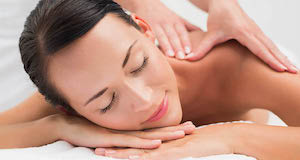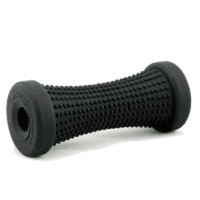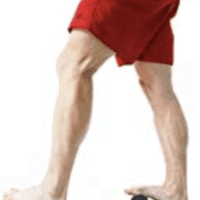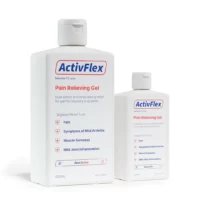Active Release Techniques (ART)
Article by Brendan Scott

Understanding Active Release Techniques (ART)
Active Release Techniques (ART) stand out as a unique, hands-on approach for treating injuries related to muscles, tendons, ligaments, fascia, and nerves. Unlike traditional massage that focuses on general areas, ART specifically targets abnormal or damaged tissue, offering a tailored solution for pain and mobility issues.

What is the Active Release Technique?
Active Release Techniques (ART) are a hands-on approach uniquely designed for treating injuries affecting muscles, tendons, ligaments, fascia, and nerves. Unlike traditional massage, which generally addresses broader areas, ART pinpoints abnormal or damaged tissue. This tailored approach effectively addresses pain and enhances mobility.
Does Active Release Technique Really Work?
Anyone can benefit from ART. It doesn’t matter if you’re an athlete, an office worker, or suffering from repetitive strain injuries; ART can significantly impact your recovery process. It’s effective in treating a wide range of conditions, from ITB Syndrome and hamstring strains to plantar fasciitis and shin splints. Furthermore, ART proves helpful for neck, back, and knee pain.
ART’s Role in Boosting Recovery
ART expedites recovery by restoring normal tissue function and averting further injuries. Athletes find it particularly beneficial, as it enhances their training efficiency. However, it’s equally vital for the average person, helping them remain injury-free. By proactively addressing scar tissue build-up, ART ensures tasks like reaching for a seatbelt continue to be effortless.
Personalising Your Treatment
Your ART practitioner will tailor your treatment frequency to match your unique injury and response to initial treatments. Immediate improvement is typical, although chronic issues may take longer to heal. The priority is always treating the underlying cause, not just alleviating symptoms.
Active Release Techniques in Detail
ART involves an expert ART massage therapist applying precise pressure while moving the affected body part through a range of motions. This combination of movement and pressure breaks up scar tissue, improving flexibility and reducing pain.
Preventing Future Injuries
Beyond treating existing injuries, ART is a proactive approach in preventing future issues. Regular sessions can keep muscles and joints supple, reducing the risk of repetitive strain injuries, common in both athletic and workplace settings.
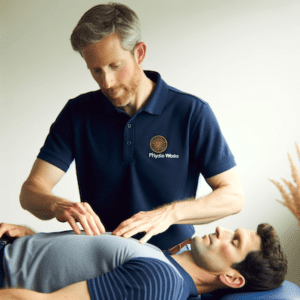
Workplace Wellness with ART
For those in sedentary or physically demanding jobs, ART can be particularly beneficial. It addresses issues arising from prolonged sitting or repetitive motions, enhancing overall wellbeing and productivity.
Enhancing Athletic Performance
For athletes, ART is not just a recovery tool; it’s a performance enhancer. By maintaining optimal muscle and joint health, athletes can achieve better flexibility, strength, and endurance.
Conclusion: Embrace ART for Comprehensive Care
Consider ART as a comprehensive approach to treating and preventing muscle and joint issues. Whether for immediate relief or long-term health, ART stands as a vital component of physical wellbeing.
What to Do Next?
Experiencing discomfort in your muscles or joints? Consulting a professional massage therapist trained in Active Release Techniques is your next step. They can offer you personalised guidance and a treatment plan that addresses your specific needs.
Your Path to a Fantastic Massage Experience
At PhysioWorks, we’re committed to ensuring every massage is a fantastic experience. If you’re not completely satisfied within the first 30 minutes, we offer a money-back guarantee, no questions asked.
For the best massage experience, consult with our PhysioWorks team. Our therapists, running independent businesses, are dedicated to providing top-notch care.
In Conclusion
Active Release Techniques offer a modern approach to treating and preventing muscle and joint issues. With its focus on personalisation and comprehensive care, ART stands as a beacon of hope for those struggling with pain and mobility issues. Don’t let discomfort control your life; explore the benefits of ART and take the first step towards a pain-free, active lifestyle.
Related Articles
For those interested in various massage techniques, PhysioWorks offers a wide range of articles that cover different types of massages, each with its unique benefits and applications. Here’s a brief overview of some techniques:
- Lymphatic Drainage Benefits: Lymphatic drainage massage is beneficial not only for individuals with medical conditions but also for those experiencing chronic fluid retention, swelling in limbs, breast tenderness, and more. It helps boost the immune system by addressing recurrent infections and hormonal imbalances.
- Deep Tissue Massage: This type of massage targets deeper tissue structures of the muscle and fascia. It’s more intense than lighter styles like Swedish massage and focuses on relieving chronic muscle tension.
- Relaxation Massage: A therapeutic technique that promotes deep relaxation and overall well-being. It uses smooth, gentle, and flowing strokes to alleviate muscular tension, improve circulation, and enhance the range of movement.
- Swedish Massage: Known for its gentle approach, Swedish massage aims to relax the entire body through various techniques, including rubbing the muscles with long gliding strokes in the direction of blood returning to the heart.
- Pregnancy Massage: Offers essential care for expectant mothers, focusing on reducing stress, alleviating back and leg pain, and providing much-needed relief during pregnancy.
- Sports Massage: Tailored for athletes or those with sports injuries, focusing on recovery, prevention, and helping enhance performance. It’s ideal before or after events to prepare the body or aid in post-event recovery.
- Remedial Massage: Aimed at treating specific muscle tension or chronic pain. It involves assessing and treating the body’s musculoskeletal dysfunctions, offering relief from conditions like sciatica and carpal tunnel syndrome. This massage is highly personalised, based on the individual’s needs.
- Therapeutic Massage: Encompasses various techniques to address muscle pain and improve relaxation. While specific details weren’t provided in the sources, therapeutic massage generally aims to relieve stress, improve circulation, and reduce muscle tension, offering a more generalised approach to wellbeing.
For more detailed insights into these massage types and to understand which might be the best fit for your needs, consulting with a professional therapist can also provide tailored advice and a treatment plan specific to your conditions and wellness goals.


